During the 1930s, the Great Plains region of America experienced intense droughts and severe dust storms, destroying the land and the lives of many communities in an event known as the Dust Bowl.
The families living on the Plains were already struggling from the economic effects of the Great Depression. When their farms were ruined by topsoil loss due to the dust storms, many faced extreme hunger, poverty, and even disease and chose to abandon their homesteads and head west. Others stayed in the region and fought an unimaginably hard battle for survival.
The joint environmental and economic ruin caused by the Dust Bowl is like nothing else in American history. These books delve into the details of the disaster, what caused it, and how it has made a lasting impact on the country. They also explore the human side of the Dust Bowl, giving a voice to the many people whose lives were upended by the droughts and storms.
Read on for seven meaningful books about the Dust Bowl, a unique and devastating part of our country’s past.
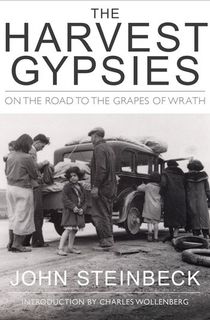
The Harvest Gypsies
This book by iconic author John Steinbeck includes seven articles he wrote for the San Francisco News chronicling the Dust Bowl and the migration of families to the West. Steinbeck was on the scene, witnessing firsthand the destruction and displacement brought on by the droughts and dust storms. These articles provide powerful testimony of the realities of the Dust Bowl, from someone who was really there. In addition, this book contains photographs by the renowned Dorothea Lange and other photographers, many of which were originally published alongside Steinbeck’s articles.
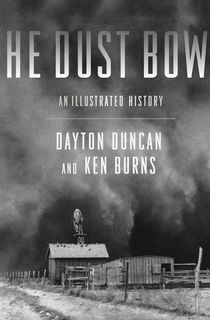
The Dust Bowl
The Dust Bowl covers all aspects of the disastrous era in one dramatic volume. Authors Dayton Duncan and Ken Burns joined forces to compile over 300 photographs, some never before published, comb through private letters, government reports, and newspaper articles, and conduct interviews with those who lived through the Dust Bowl. This book contains breathtaking visuals and heart-wrenching testimonies that capture the tragedy and far-reaching effects of the era.
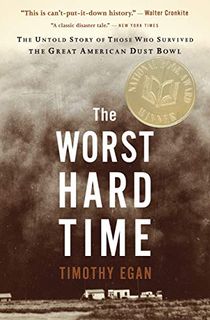
The Worst Hard Time: The Untold Story of Those Who Survived the Great American Dust Bowl
This National Book Award winner from New York Times journalist Timothy Egan follows the stories of a dozen families and their communities who fought for survival during the widespread tragedies of the Dust Bowl. Egan captures the terrifying catastrophe of the storms as well as the inspiring and very human stories of those who stayed in the Plains states and persevered through the horror. Egan’s book is a warning tale of the destruction environmental disasters can bring when humanity doesn’t respect nature.

Years of Dust: The Story of the Dust Bowl
Albert Marrin dives into the multifaceted causes of the Dust Bowl, as well as the lasting impact it had on the American people. He looks into the ecological context of the Great Plains that made the disaster possible and the human actions that ultimately ushered in such a wave of destruction. Peppered with photographs and historical quotations, this book is a tribute to the people of the Plains region as well as to the land itself. Years of Dust was the recipient of a National Humanities Medal.
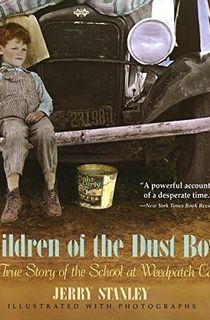
Children of the Dust Bowl: The True Story of the School at Weedpatch Camp
This book gives an inside look into the true story of the school formed at Weedpatch Camp, the migrant camp erected in California during the Dust Bowl and immortalized in Steinbeck’s Grapes of Wrath. Originally, the migrants were looked down on by Californians and thought to be unintelligent, dirty, and disease ridden, and so the “Okie” children were often barred from public schools. This is the powerful story of Leo B. Hart, who, due to great sympathy for these impoverished children, became superintendent of the county and established a school just for the migrant children living in the camp.
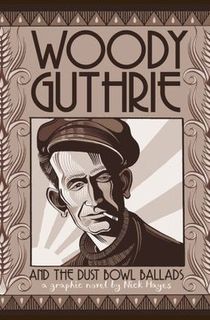
Woody Guthrie and the Dust Bowl Ballads
The Dust Bowl inspired moving works of art in many different forms, including folk singer Woody Guthrie’s 1940 album, Dust Bowl Ballads. Here, author Nick Hayes recounts Guthrie’s life between the 1920s and 1940. Hayes begins with Guthrie as a teenager in Oklahoma and follows him through towns there and in Texas that are ravaged by the dust, before narrating his movement to the farms and migrant camps of California. This moving biography culminates in Guthrie’s move to New York, where he wrote his album inspired by his experiences in the Dust Bowl.

The Grapes of Wrath
A list of books about the Dust Bowl, even one composed of nonfiction titles, wouldn't be complete without The Grapes of Wrath. John Steinbeck’s 1939 Pulitzer Prize-winning novel is largely responsible for canonizing the struggles of people living through the Dust Bowl in the American memory. The epic follows a migrant family driven from their home in the plains of Oklahoma towards California in search of a better life after they are left in ruins by the droughts and dust storms. This is one of the most beloved and widely read books in American history.




